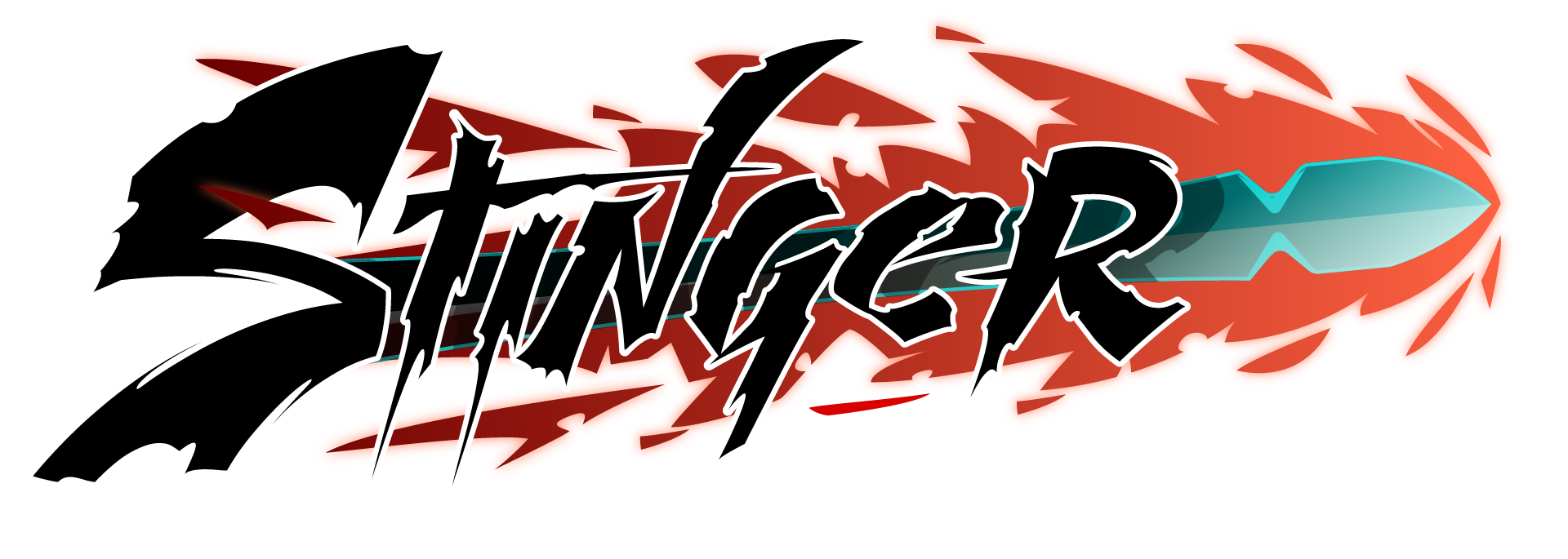A devil staggers in front of you, dying; in the distance, his partner still standing. You launch forward with a sturdy stab, your sword striving for the strike. As your blade strikes, he stumbles. Step by step you inch closer to what remains of his stitched together and strange sorry state. The attack to lunge towards him was strategic, but also stylish.
– That, was the “Stinger”–

A move that inspired many attacks in future games and even this website’s very name. Celebrate the one year anniversary of Stinger Magazine with us and strap in as we dive into the storied history of this iconic attack from not only the Devil May Cry series, but the genre as a whole!
The first appearance of the Stinger in a 3D action title was, ironically, in a game that Devil May Cry strove to improve upon: Rising Zan: The Samurai Gunman. Here the attack was called “Charge” and it saw protagonist Zan leap forward to strike with a strong stab. While it is unconfirmed if “Charge” was the first state in which the “Stinger” was shown is up for debate, it still deserves a stalwart mention. It wasn’t until Devil May Cry from 2002 that the “Stinger” stepped upon the stage, leaving those starving for more combat stunned. The “Stinger” is in all games of the series and available to nearly all its playable characters. It is always the same in its execution, you hold down the lock-on button, flick the directional stick towards the enemy and press attack. Watch with glee as our hero dashes across the stage and stabs – no, stings – his foe. As a move, the “Stinger” is defined by five stout characteristics. It approaches the enemy faster than you can run, is stylish, knocks them down or staggers them, deals good damage and requires time to start up while also having a lot of recovery frames at the end of its animation. You can use it to knock a pesky enemy down to focus on the rest, create an opening or dance between enemies at will; saving time and keeping the combo going. Maybe you’ll even cancel to it mid-attack to knock the foe down so you can truly toy with him. But due to the somewhat longer startup you won’t start a combo with it or use it when surrounded. Easy to execute, big on reward while still requiring a strategic mind to use it to its fullest.
One small stain on the move is that it isn’t available from the start. Why would a designer make the strange decision to hide the staple of the series behind a stache of Red Orbs? There is a saying amongst Dutch Designers, namely artists, that roughly translates as such:
“Before you take the next step, you must first master the first”.
It is a state of mind that means to urge designers and artists alike to first learn how to do it the original way, before they use modern techniques to make life easier. Learn to make your own paint before you buy it, be taught how to blend your own colors before letting the computer make them for you and so on. The same can be applied here, before you make your life easier with, but also more complex, with the “Stinger”, one must first learn how to fight without it so they can grasp the basics and truly see how the move affects their playstyle.
 Thanks to the strategic value of the attack and style, the Stinger quickly became a staple for the character of Dante, Devil May Cry as a whole and even the genre. Games like Killer is Dead, Metal Gear Rising: Revengeance but also Nioh implemented the move into their design. Others added their own variation; Ninja Gaiden stood strong with the “Flying Swallow”, a strike that saw protagonist Ryu Hayabusa do a strong attack in the air that propelled him forward. But, while powerful, it left him standing still like a statue for a stray second, steering players away from reckless use. It was strong, staggered, stylish, and had stakes; all the hallmarks of a “Stinger”. Within Devil May Cry 4, side-character Trish got the “V-Divider” – which could be called the reverse of the “Stinger”. Instead of approaching enemies, it brought them to her – a neat twist.
Thanks to the strategic value of the attack and style, the Stinger quickly became a staple for the character of Dante, Devil May Cry as a whole and even the genre. Games like Killer is Dead, Metal Gear Rising: Revengeance but also Nioh implemented the move into their design. Others added their own variation; Ninja Gaiden stood strong with the “Flying Swallow”, a strike that saw protagonist Ryu Hayabusa do a strong attack in the air that propelled him forward. But, while powerful, it left him standing still like a statue for a stray second, steering players away from reckless use. It was strong, staggered, stylish, and had stakes; all the hallmarks of a “Stinger”. Within Devil May Cry 4, side-character Trish got the “V-Divider” – which could be called the reverse of the “Stinger”. Instead of approaching enemies, it brought them to her – a neat twist.
The “Stinger’s” storied history takes a bit of a turn in 2011. Two years after its initial release, a series of Bayonetta gameplay videos surfaced on the internet. While not terribly interesting described as such, there was a catch: the player was Hideki Kamiya, writer and director of the game, but also of Devil May Cry. The videos contained his live commentary with the gameplay, spouting all sorts of nice little details. One of them was the following.
“[In Bayonetta] there’s a move called Stiletto. So, dash moves. In Devil May Cry 1 there was a move called “Stinger”, and apparently there’s a “Streak” in Devil May Cry 4. Since there were already two dash moves that began with “St-”, I wanted to name this one right so I discussed it with JP [Jean Pierre Kellams – creative director] and we arrived at the name Stiletto. Stilettos are… Take stiletto heels, for instance. Shoes with really sharp heels. I thought the name suited a female character perfectly”.

Diving a bit further, it is a stifle of laughs to see how deep this rabbit hole goes. First there was Stinger in Devil May Cry, followed up by Nero’s Streak in Devil May Cry 4 and the later added Rising Star attack for Vergil in its Special Edition. Stiletto was already mentioned in the Bayonetta series. But it is even present in games like Killer is Dead where assassin Mondo Zappa uses his Power Stab to cross the room for a killing blow and Metal Gear Rising: Revengeance finishes the legacy with Raiden’s Lightning Strike while the genre went full circle with The Wonderful 101’s very own Wonderful Stinger.
Coincidence? Inside joke? Hard to say. But a funny story to speculate about regardless. The tradition sadly breaks a bit with Team Ninja. In their current flagship title Nioh, protagonist William can use an attack called “Devastating Rush” which is eerily similar to the “Stinger” of yore, yet there is no “st” in sight. Even within the Devil May Cry series the tradition seems lacking at time, with Lady’s go to Stinger move being called “Rush Hour” in Devil May Cry 4: Special Edition.
While some are missed opportunities, there is no denying the influence the move has had. And for good reason, it is straightforward, strong and is a great tool to stagger your foes while offering a strategic layer to combat that makes Devil May Cry and its followers stand apart from the stale stragglers. There’s a reason it was the first thing to come to mind when thinking of a name for this website, it could only be Stinger. Maybe there be many more!

斬 postscript notes 斬
-
There are stories making the rounds online that the signature move got its name from the Stinger Missile, a weapon that – once locked on – hits its target. But there was no official confirmation of this so I didn’t mention it. Same goes for it ‘stinging like a bee’;
-
In an interview with Electronic Gaming Monthly, issue December 2001, Kamiya stated that his favorite attack was in fact the “Stinger”;
-
There are, on purpose, more than 100 words in this article that start with “st”; that’s nearly 10% of all the words in the article! Had a blast writing this!
-
This is the first article to be made in a clean HTML template of my own design, here’s hoping it doesn’t crash on every device under the sun!
This article was originally written on the original Blogspot site, if there are any visual bugs please let me know in the comment-section.


1 Comment